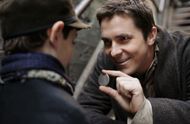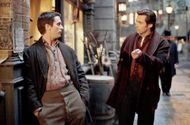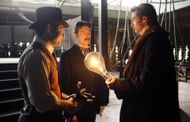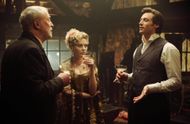Christopher Nolan has never met a storytelling sleight of hand he couldn’t somehow justify. The Prestige remains one of his most polished cinematic illusions, a film built on a complex plot and a mind-bending sense of disorientation. The 2006 film about dueling magicians in Victorian London has a mind-scrambling twist that appears to come out of nowhere—until you go back for a second look, which exposes something stunning.
Nolan didn’t simply disguise his twist in plain sight. He had publicly disclosed it in the first act of the movie. Yes, the secret behind Alfred Borden’s greatest trick — and the final twist of this entire film—is essentially ruined at the start.
So let’s flip back the film and pull this audacious narrative trick apart and see how Nolan rewards those who watch not just with their eyes but with attention.
A child’s question that gave everything away

In one of the movie’s early scenes, Alfred Borden (Christian Bale) does a birdcage magic trick. He crushes the cage and apparently kills the bird but produces a second bird a second later. And while the adults look on at the spectacle the illusion has caused, Sarah’s young nephew, with unclouded, wracked devastation, remarks, “He killed him.” And when the bird returns, all the child does is ask, “Where is his brother?”
That one line — typically disregarded by viewers on first pass — is the skeleton key to the entire mystery. It’s the solution to the trick to Borden’s most impressive illusion, “The Transported Man.” The truth is plain: Borden is not a single person, but two men. Alfred and Fallon, identical twin brothers, have lived a dual life of a shared life, now finally choosing between the private and the public. One does the first half of the trick, and the other does the last half from across the stage. The crowd, and the magician Robert Angier (Hugh Jackman), take it as a tech marvel. In fact, it is a lifetime of sacrifice and deception.
Nolan doesn’t hide away this clue to his ending in a twisty flashback or a post-credits reveal — he feeds it to us through the mouth of a child before the main story even starts. It’s the magician’s dream misdirection: show the audience the truth — and then distract them with something even louder and more tragic.
Obsession, distraction, and narrative misdirection

What makes The Prestige so damn beautiful is the way that Nolan plays both his characters and his audience. Once the young boy vaguely gestures at Borden’s secret, the storyline shifts dramatically to the day of Julia’s tragic drowning in a failed escape act. This death is subsequently used as a fulcrum for both the emotion and the narrative of the film, and kicks of the vengeful feud between Angier and Borden.
It is from here that we are carried off into a plot involving sabotage, science fiction and shifting allegiances. Sara’s unhappy romance with Borden, her inability to understand the timing of his “meaning” of his “I love you,” is yet another faint clue to the truth, but even that disappears amid the overall crescendo of creeping tension.
Nolan expertly leads us toward more elaborate theories — Tesla’s machine, journal betrayals, cloning — that supplant the far simpler solution staring us in the face the entire time.
The Prestige’s structure mirrors a magic trick

Even Angier’s secret identity as Lord Caldlow — an aristocrat hiding behind a magician’s persona — plays into the theme of duality. His ruse, however, is on the surface; it is just a disguise. On the other hand, Borden’s deception is more real and substantial, given that he leads two lives dressed in one.
As Michael Caine’s character, Cutter, describes in the movie’s introductory speech, a magic trick is composed of three parts: the Pledge, the Turn, and the Prestige. Nolan conceived the whole movie following this exact structure.
- The Pledge: You’re shown something ordinary — two magicians competing for fame.
- The Turn: Something extraordinary happens — impossible tricks, apparent teleportation, and deadly sabotage.
- The Prestige: The secrets are revealed — and they were right in front of us the whole time.
By way of incorporating the twist into such a framework, Nolan effectively changes the entire film into one enormous magic trick, making us all collectively responsible for misleading ourselves. It's not like we didn't see the secret, as Cutter puts it—we were the ones who chose to be blind. “You want to be fooled,” adds Cutter.
Why it still works nearly two decades later

Almost 20 years after its release, The Prestige remains one of Nolan’s most rewatchable films precisely because of this early reveal. In a 2006 interview, Nolan explained,
“We’re inviting close scrutiny from the audience…But I think for people seeing it again, they’ll find that there were all kinds of clues, and we played very fair.”
He wasn’t exaggerating. The film dares you to look again — to revisit the birdcage, the child’s question, Sara’s doubts, the twin’s limps, and every vanishing act with fresh eyes. It’s not just a twist ending. It’s a fully recontextualized experience.
So the next time someone tells you The Prestige has a shocking finale, tell them this: the trick was never hidden. It was hiding in plain sight. All you had to do was watch closely.
Love movies? Try our Box Office Game and Movie Grid Game to test your film knowledge and have some fun!
